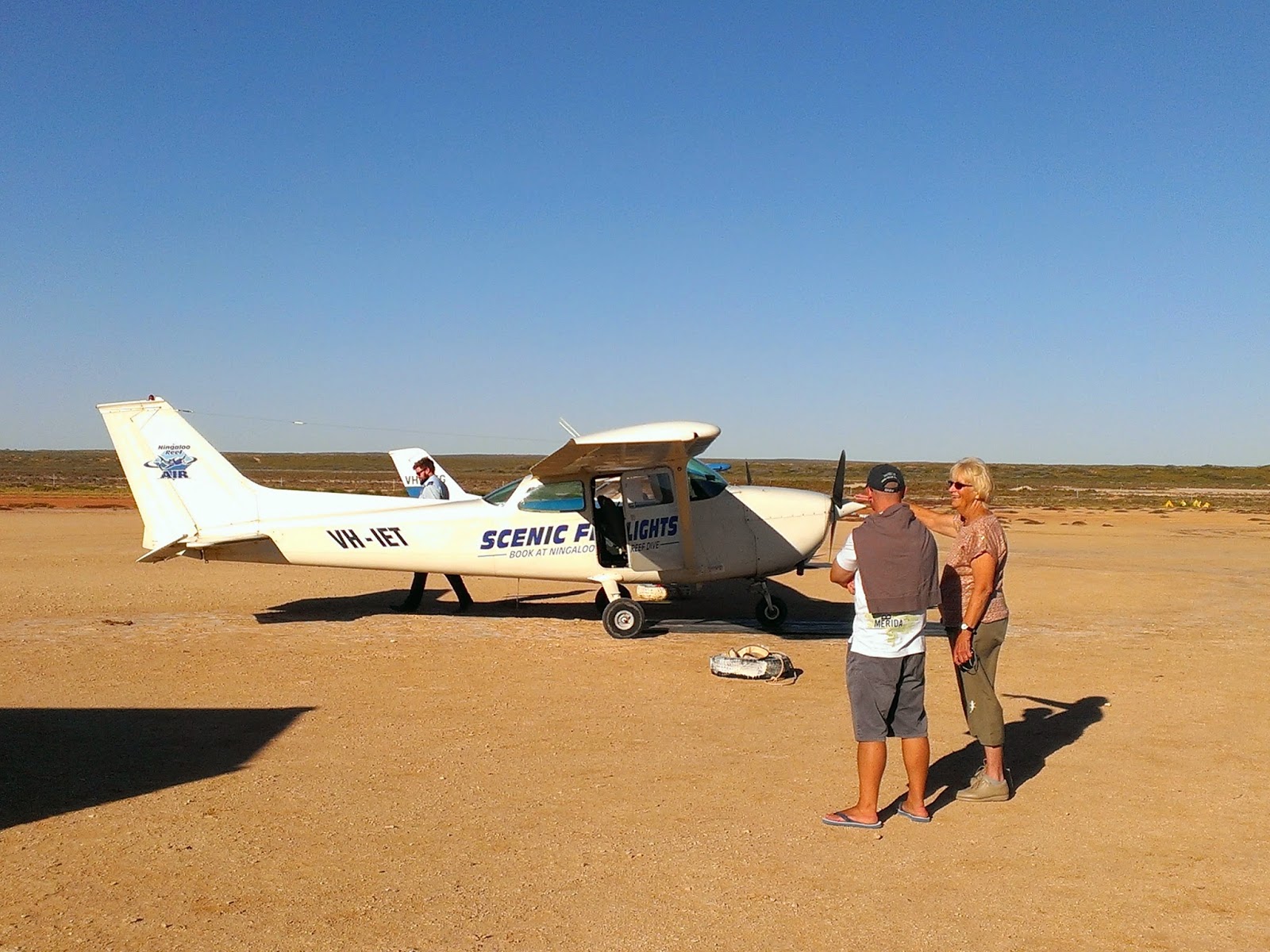There are two WWII memorial sites located on the Exmouth Gulf; The Potshot memorial commemorates the use of the West Australian coast for the allied attacks on the Japanese. The United States submarines used this area as a refuelling base and an airstrip was built for the fighting squadron until it was destroyed by a cyclone in 1945.
The next site, the Krait Memorial, is a tribute to Operation Jaywick. Fourteen members of the "Z Force" Special Operations Unit sailed from this spot on 2 September 1943 in a former Japanese fishing vessel (renamed the 'Krait') to Singapore. Under the cover of darkness they attached limpet mines and severely damaged seven ships totalling almost 40 000 tons. The party returned to Exmouth Gulf after 47 days at sea. Unfortunately, the next mission for "Z Force" 12 months later, Operation Rimau, ended in complete failure with all loss of men. Posts of the original jetty remain, and the site is an ideal spot to see the sun rise out of the water; a novelty on the west coast.
The National Park had no available camp sites, so we spent the night in the Lighthouse Caravan Park right near the tip of North West Cape. There are no free camping sites anywhere on the North West Coast; you must camp in designated camping areas only, otherwise you're slapped with a $1000 fine. How the local councils enforce that I don't know, as there are and always will be freedom campers.
A walk along the beach at sunset, followed by sausages on the BBQ, we turned in early listening to the waves, wind and rain. Gary and I rose at dawn for a birthday bike ride, about 20 kms along the flat before tackling the lighthouse hill for a sensational view overlooking the caravan park.
The town of Exmouth was established in 1967 because of the Naval Communication Station Harold E. Holt; a joint US and Australia venture for submerged submarine communications. The tallest tower of the 13 (pictured above in far distance), central tower, is the second tallest man-made structure in the southern hemisphere standing at 387 metres.
After our ride, the day became more and more windy with a bit of rain. Coats on, we entered the National Park stopping off at the bird hide, the Milyering Visitors Centre and finally Turquoise Bay, one of the top 10 beaches in WA. Unfortunately, the weather kept us out of the water (and everyone else!) on this day but two days later Gary and I returned to a different looking beach with people everywhere. The snorkelling is terrific; a thriving reef with plenty of soft corals and variety of fish, and it's all just a step off the beach. You can do a drift snorkel on the southern side of the beach, or a bay snorkel on the northern side; either way beware of the current and get out before you reach the sandbar so you don't get swept out to sea.
Egret viewed from bird hide.
Turquoise Bay on Sunday
Turquoise Bay on Tuesday
After a full day in the Park, mum's three week adventure was coming to a close. We finished it with a birthday dinner for Gary at the local Chinese/Thai (courtesy of Manfred, Ann, Jan and Jeff, thank you!) and a final freedom camp close to the airport. It has been wonderful to spend time with mum, particularly in such a way as a road trip. I think I have converted her to the motor homing way of life!
After a teary airport drop off, Gary and I headed back into Cape Range National Park with our annual parks pass. After checking the board at the entry gate, Mesa Camp indicated some empty spots, so we used that as our base for the next two nights. As from April next year, all camping is to be booked online at least 48 hours in advance: there goes the spontaneity when travelling around.
Donning our hiking boots, we took a three kilometre (1.5 hours) walk up and over Mandu Mandu Gorge, a spectacular dry gorge with red cliffs and panoramic views to the ocean. It's a Grade 4 walk; this means some steep climbing and descending and rocky underfoot, so don't attempt it in thongs as we saw some people doing.
On to Yardie Creek, the south end of Cape Range NP, for another (shorter) gorge walk but this one has a permanent water supply. The eroded multi-coloured cliffs provide roosting sites for many bird species and again the views to the ocean are stunning. We didn't see any of the rare black-footed rock wallabies; they were hiding too well.
Another great snorkelling spot in the Park is Oyster Stacks. After a morning ride into a very strong headwind, I put on my newly acquired gear and once again saw some fabulous coral and fish. This area can only be snorkelled on the high tide as is becomes too exposed otherwise and difficult to negotiate the coral.
Having explored the western side of Cape Range, it was time to look at the Eastern side on our way back to Coral Bay. Some of the roads and walking trails are closed due to the April flooding, but we did get to the top of Charles Knife Road for a look at the canyon. It was spectacular, and well worth the part-rugged drive up there. We could see the naval communication towers, Exmouth Gulf and all the way to Learmonth airport and beyond. We decided to stop for awhile to take in the view.
And so our five day trip Exmouth and surrounds was coming to an end. Gary and I were once again reacquainted after three months apart. It was time to head back to Coral Bay and our current but temporary lodgings at the Seasonal Workers Village, and stroll down to the town beach and watch another infamous west coast sunset.
























































